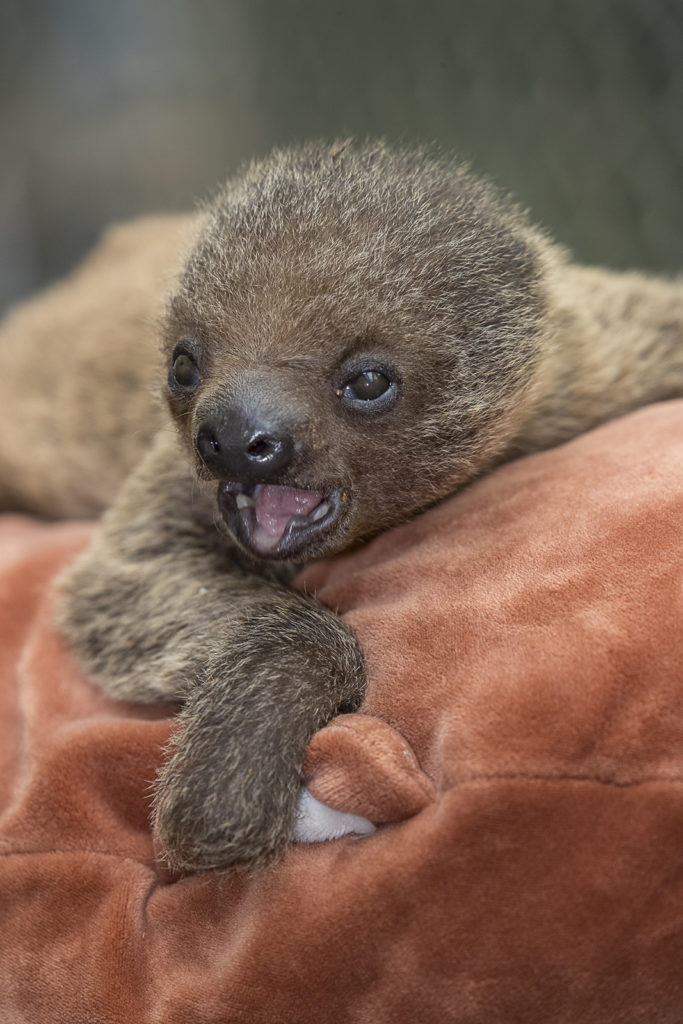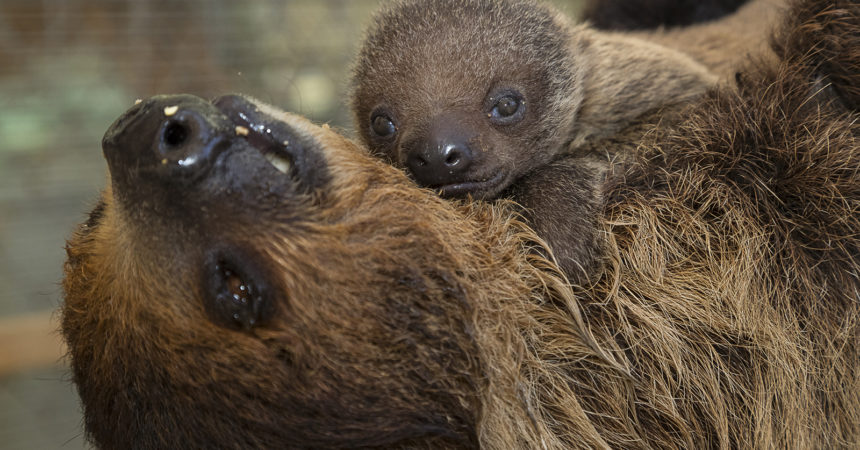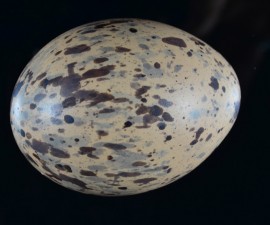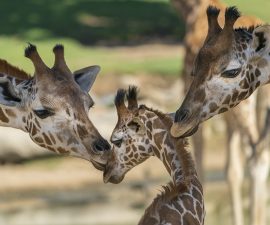Curious Youngster at the San Diego Zoo Is Already Working on Ambassador Skills
Xena, a Linné’s two-toed sloth that is one of the San Diego Zoo’s best-known Rady Animal Ambassadors, has given birth to her first baby. Born April 19, 2019 to mom Xena and dad, who is named Brad Pitt, the not-yet-named baby sloth has spent the past month out of the public eye, bonding with mom and being monitored by animal care staff.
Baby sloths nurse for approximately one month, but they begin eating solid foods in the first week or two, getting crumbs from mom as she eats. Those small pieces of food are believed to share the mother’s saliva, which helps create healthy stomach microbes for the young sloth.
According to the Zoo’s animal care team, the baby sloth is alert and already very interested in interactions with keepers—even repositioning on mom to get as close to them as possible.
“We do not know the sex of the baby right now,” said Kelly Lee, senior keeper, San Diego Zoo. “We did have to do some DNA testing, and we’re waiting for the results. It’s really hard to tell a female from a male just by looking at them.”
Linné’s two-toed sloths are slow-moving, nocturnal creatures that eat, sleep, mate and give birth while hanging upside down—high in the branches of tropical and cloud forests of Central and South America. The baby sloth will start to hang by its claws on its own at 20 to 25 days old.

Guests can view Xena and her baby every Sunday at 11 a.m. at the Zoo’s Africa Rocks Stage area, or through privately booked tours that are available three times a week. However, because mom and baby are still bonding, these appearances are not guaranteed. The Zoo’s animal care team will continue to monitor their progress, with hopes of expanding the number of appearances in the future.
The San Diego Zoo is globally recognized and a San Diego icon, hosting more than 4 million guests each year. At the San Diego Zoo, visitors can watch penguins and sharks swim, observe the behavior of century-old Galápagos tortoises, enjoy the beauty of exotic orchids, marvel at the koalas, explore walk-through aviaries filled with the songs and colors of rare birds, and appreciate the power of leopards and jaguars. The San Diego Zoo is also accredited by the American Association of Museums as a Botanical Garden. As visitors discover the rare and endangered species at the San Diego Zoo, they are directly contributing, through admission and on-grounds sales, to the efforts of San Diego Zoo Global, an international nonprofit conservation organization that works to fight extinction through recovery efforts for plants and animals worldwide. To learn more, visit sandiegozoo.org, or connect with us on Facebook, Twitter, Instagram or YouTube.





